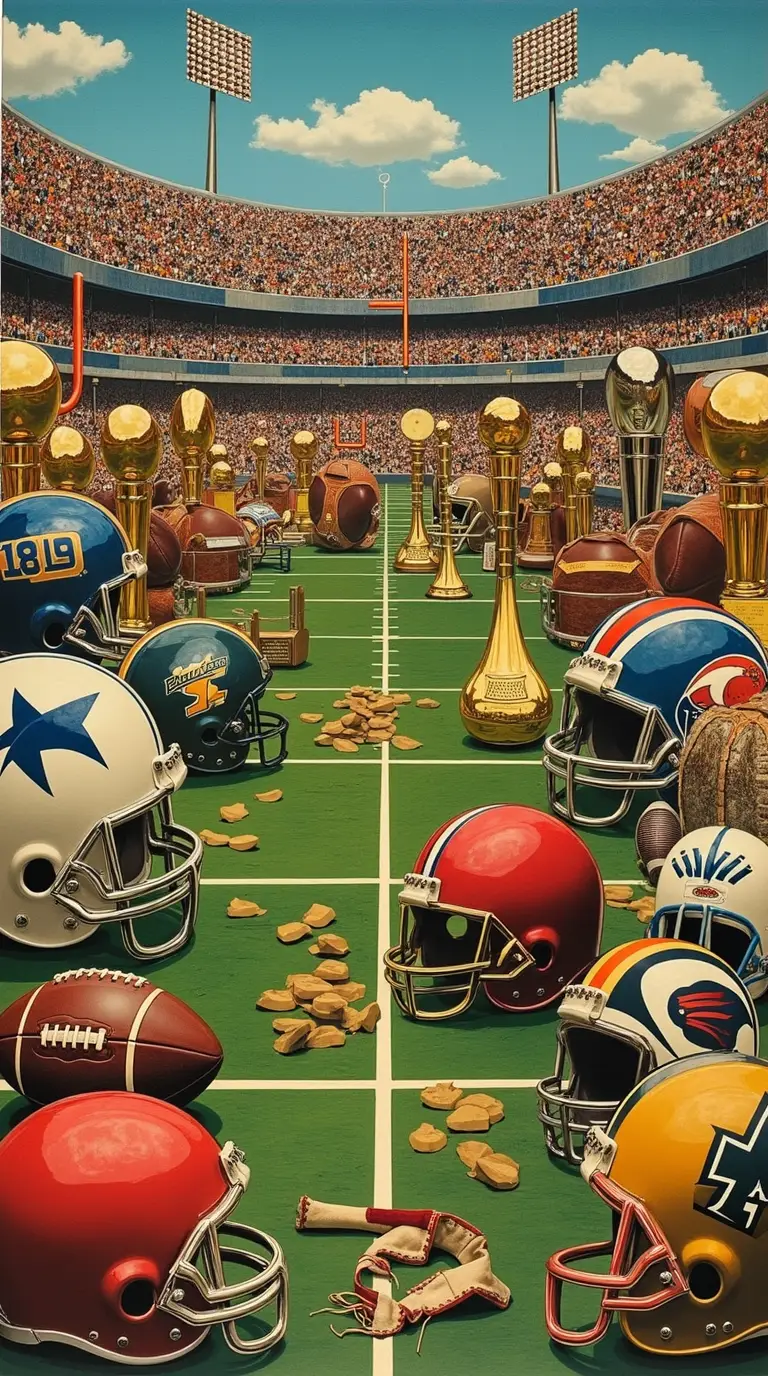Introduction of American Football
Welcome to the exciting universe of American Football, a sport that combines brute force, complex strategy, and a passion that electrifies entire stadiums. Originating in the United States, where it is the undisputed king of sports (especially through the NFL – National Football League), American football has gained fans worldwide thanks to its dynamism and spectacle.
At first glance, it might seem chaotic, but beneath the surface lies a game of physical and mental chess. The main objective is simple in concept but complex in execution: carry an oval ball into the opposing team’s end zone to score points. This can primarily be achieved in two ways:
Running with the ball (Rushing): A player advances yards by carrying the ball.
Throwing the ball to a teammate (Passing): The Quarterback throws the ball to an eligible receiver.
It is the ultimate team sport, where each player has a very specific role, and coordination between the offense (those trying to score) and the defense (those trying to stop them) is crucial.
A Bit of History: From Rugby to the Gridiron

American football wasn’t born overnight. Its roots lie in two British sports: rugby and association football (soccer), which were popular at universities on the East Coast of the United States in the late 19th century.
The key figure in the transformation and creation of its unique identity was Walter Camp, a Yale University player and coach, considered the «Father of American Football.» Between the 1880s and 1890s, Camp introduced fundamental rules that clearly distinguished it from its predecessors:
The Line of Scrimmage: The imaginary line where each play begins, separating the offense from the defense.
The Down System: The rule that a team has a limited number of attempts (initially 3, later 4) to advance a specific distance (today, 10 yards) or lose possession of the ball.
Number of Players: Reduced the number of players on the field to 11 per team.
Scoring System: Established specific point values for different ways of scoring.
The game initially flourished at the collegiate level, becoming an important part of student culture. Professionalism took longer to establish. The American Professional Football Association (APFA) was founded in 1920 and renamed the National Football League (NFL) in 1922. However, it wasn’t until after World War II, and especially with the merger of the NFL and the rival American Football League (AFL) in 1970, that professional American football achieved the massive popularity it enjoys today, culminating each year in the largest sporting event in the United States: the Super Bowl.
1. The Objective: Yards and Points
The field is 100 yards long between the end zones. The game is based on the constant struggle to gain yards.
Downs: The offense has 4 attempts («downs») to advance at least 10 yards. If they succeed («First Down»), they get another set of 4 downs to continue advancing. If they fail on the fourth down, they usually kick the ball to the opposing team (punt) or attempt a Field Goal if they are close enough.
Scoring:
Touchdown (TD): 6 points. Achieved by carrying the ball (running or receiving a pass) into the opponent’s end zone.
Point After Touchdown (PAT): 1 or 2 points. After a TD, the team can kick the ball through the uprights (1 point) or attempt another play from the 2-yard line to enter the end zone (2-point conversion).
Field Goal (FG): 3 points. Achieved by kicking the ball through the goalposts («H») located at the back of the end zone.
Safety: 2 points. Awarded to the defense if they tackle the offensive player with the ball inside their own end zone.
2. A Sport of Specialists
Unlike sports like soccer or basketball where players often participate in both attack and defense, roles in American football are highly defined:
Offense: Players specialized in moving the ball and scoring (Quarterback, Running Backs, Wide Receivers, Tight Ends, Offensive Line).
Defense: Players specialized in stopping the opponent and recovering the ball (Defensive Line, Linebackers, Cornerbacks, Safeties).
Special Teams: Players who come on for kicking plays (kickoffs, punts, field goals, extra points).
3. The Iconic Equipment
The visual appearance of the players is unmistakable due to their protective equipment, essential in a high-contact sport:
Helmet: Protects the head and face. Has evolved tremendously to improve safety.
Shoulder Pads: Protect shoulders, chest, and upper back.
Other Padding: Pants with integrated pads for thighs, hips, knees, and tailbone. Also, mouthguards.
4. The Super Bowl: More Than Just a Game
It’s the NFL championship game and has become a global cultural phenomenon. It is one of the most-watched television events in the world each year, famous not only for the game itself but also for its spectacular halftime shows featuring world-renowned artists and for its commercials, which are among the most expensive and creative on television.
